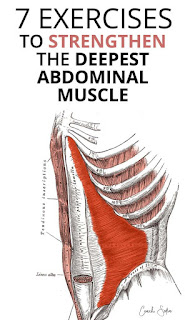Lower Back-Friendly Leg Workout
I remember when I was diagnosed with a herniated disc and piriformis syndrome, I felt like my gym days were over. I was in constant pain and couldn’t even go for a walk without pausing every 5 minutes to stretch.
Things got worse after my ankylosing spondylitis diagnosis. I was asked to never squat or lift weights again if I wanted to avoid arthritis pain. I love to exercise so that was out of the question. Thankfully, my education in corrective exercise and strength training helped me in slowly introducing weights without triggering symptoms.
For the past few years, I’ve bee able to squat, lunge and deadlift with weights pain-free and I always get asked how I structure my workouts without causing a flare-up. So today I’m gonna share with you one of my low-impact, back-friendly leg workouts! (Youtube video below!)
You’ll be able to see how I slowly go through my workout and a few key tips to keep in mind if you’re thinking about starting an exercise program. You’ll notice that I don’t engage in high-intensity exercises or any sort of jumping activity. I used to go really crazy on HIIT and plyos, but I think I enjoy and appreciate staying pain-free way more.
I definitely miss it, but I think my workouts now are much more intense and my body is responding much better to them. So I do what my body asks me to do.
Can I go to the gym with a herniated disc?
Before I share my workout, I just want to address this first. Yes, you can certainly exercise with a herniated disc but you want to consult with your physician first. Make sure the herniation is not very advanced and that it’s okay to engage in low impact exercises. Once you get your doctor’s opinion that it’s safe to proceed, I would recommend you follow these key points:
- Activate and strengthen your intrinsic core muscles responsible for supporting your spine. If you’re going to be loading your body with weights, you have to make sure you’re not putting unnecessary pressure on your lumbar spine. You want your muscles to do the work.
- I suggest you avoid exercises like the barbell back squats. Yes, you can squat, but placing the load on your spine will increase disc compression and can trigger nerve pain. I love doing sumo or goblet squats instead.
- Activate your glutes along with your core with isolation exercises.
- Avoid bending your back at the spine. Practice the hip hinge and initiate the movement from your hips.
- Avoid overextension. If the disc herniation is facing forward, overextending can push the disc material further out. The same goes for side and forward bending.
Can I exercise with hip and piriformis pain?
I’d say the same bullets above apply if you have piriformis syndrome or chronic hip pain. Of course, you want to find out whether it’s piriformis syndrome or sciatica.
If you have piriformis syndrome, you probably notice that it’s so easy to irritate this muscle doing hip exercises. The piriformis is a deep gluteal muscle. It’s a hip external rotator and responsible for stabilizing and supporting the pelvis.
As a result, this muscle tends to compensate a lot for glute weakness. The exercises I include in the workout video below will show you how to activate your glutes without getting the piriformis involved.
I also highly recommend you get my program Piriformis Control to figure out what’s triggering the piriformis muscle so you can safely proceed with the appropriate rehab plan before attempting to add weights.
I’m going to jump into the low impact leg workout video, but make sure to scroll below the video, I’ve included some additional tips about which exercises to avoid to stay injury-free.



Comments
Post a Comment